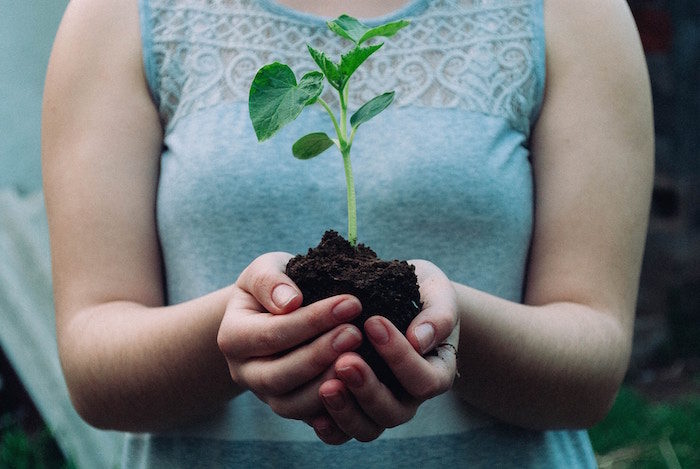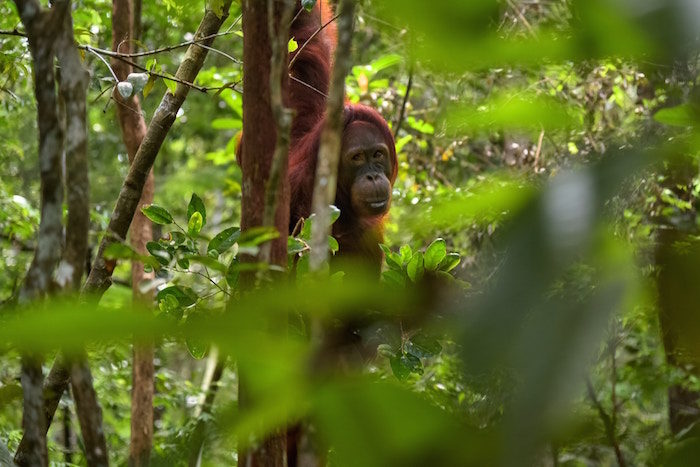Deforestation is a huge environmental issue—worldwide, it’s been estimated that we’re losing 18.7 million acres of forest a year. Agriculture, logging, and forest fires are all contributing to this destructive process, which is one of the main drivers of climate change.
Our forests are sometimes referred to as the “lungs of the planet,” because trees absorb carbon dioxide when they photosynthesize. This process helps to remove some of the pollution we produce from the air and reduce the impact of climate change. So the more trees we lose, the harder climate change will hit us.
Since forests absorb and store a lot of carbon, cutting down trees and burning them (or leaving them to rot) releases carbon, further contributing to climate change. Deforestation directly impacts humans too. Forests are extremely important to indigenous peoples, who rely on them for shelter and food, and the pharmaceutical industry often discovers plants with important medicinal properties in rainforests. Additionally, deforestation is disastrous for our flora and fauna – we’re losing thousands of forest-dwelling species every year.
Things have been looking pretty bleak in recent years, with governments taking few meaningful measures to address the problem. But now, there are signs that things could be looking up.
What’s changed?
Recent data from NASA, collected by a new instrument mounted on its satellites, suggest that there may be grounds for cautious optimism. The data show that although deforestation is continuing at an alarming rate, the overall leaf area on the planet is increasing by over 2 million square miles per year. Over the past 20 years, new greenery has covered an area the size of the Amazon rainforest.
But why? Well, most of the new leaf area is in India and China – countries which, ironically, are notorious for the amount of pollution they produce. China in particular has been working to preserve its existing forests and plant more trees, keen to improve the infamously poor air quality in many of its industrial areas. Slowing down soil erosion (a common side-effect of removing vegetation) is also a priority for China, since the erosion reduces fertility and makes it more difficult to grow crops.
A more dubious contributor to the greening is intensive agriculture. China and India have huge, rapidly-growing populations to feed, and have dramatically increased the amount of food they grow over the past two decades. In India, crops are responsible for much of the country’s new leaf area.
Irrigation techniques and fertilizers have made it possible for India and China to produce considerably more food for their growing populations, but these methods come with their own environmental costs. Irrigation can lead to an excess of water being drawn from rivers and aquifers, along with waterlogging and too much salt in the soil. Meanwhile, nitrogen-based fertilizers can pollute water and create ocean dead zones.
But regardless of its origin, the presence of extra vegetation will help to slow climate change by absorbing carbon dioxide, which is a positive thing.
What are the implications?
When the increase in leaf area was first noticed, as early as two decades ago, it was thought to be the result of higher temperatures and more rainfall, both caused by climate change. Models predicting the various impacts of climate change were based on this assumption. But now NASA’s new technology has proven that this isn’t the whole story, so models will have to change to reflect this. It’s not yet clear what these changes will look like.
Does this make up for deforestation?
So if the overall leaf area is increasing, does it really matter that we’re losing so much rainforest?
Well, yes. When ancient forests are destroyed, so are the complex ecosystems within them. These forests are extremely biodiverse and often home to species which aren’t found anywhere else in the world. Areas where forests are being decimated, such as the Amazon and Indonesia, harbor particularly important and fragile ecosystems. Planting new trees softens the blow in terms of emissions, but it can’t make up for these devastating losses – and young trees don’t absorb as much carbon as their more established counterparts. So fighting deforestation is still incredibly important.
A long way to go
Increased tree-planting and leaf area are positive changes, but scientists warn that we can’t afford to get complacent; though the increase in vegetation may slow down global warming, we still have a huge number of environmental issues to address. To name just a few, melting ice caps and glaciers are causing sea levels to rise at an unprecedented rate, the oceans are becoming increasingly acidified, and soil erosion is making it ever-harder to grow food.
Rays of hope
Although this re-greening alone won’t be enough to solve climate change, it’s significant because of what it symbolizes. In particular, it shows that China, a major polluter, is finally taking its environmental impact seriously, along with the air pollution problems which are damaging its citizens’ health. For a country which previously pushed for economic growth at whatever cost, this is progress—and it raises hopes that the rest of the world might follow suit.
Related: How Our Avocado Fetish Is Fueling Deforestation, Cartels, & Climate Change
These 4 Everyday Products Are Secretly Causing Massive Deforestation. How To Avoid Them
Get more like this—Sign up for our daily inspirational newsletter for exclusive content!
Photo: Nikola Jovanovic on Unsplash; Jorge Franganillo on Unsplash






